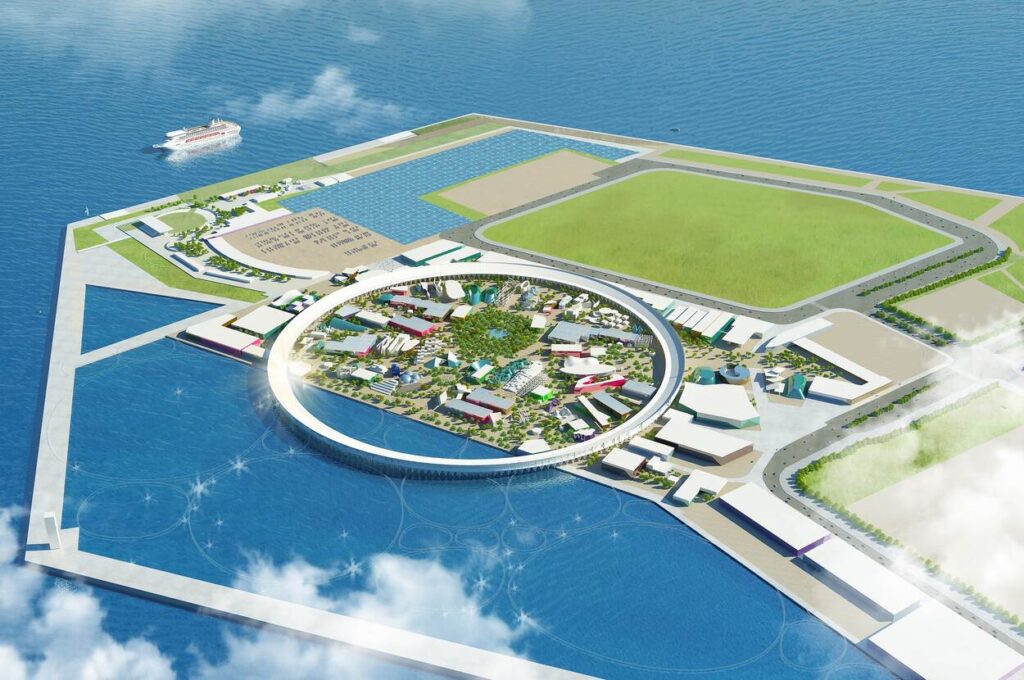
©︎Japan Association for the 2025 World Exposition
The opening is about a year and nine months away, but so far, no country has applied to build an overseas exhibition hall called the “Flower of the Expo.” Overseas exhibition halls built by major developed countries were named this because they were colorful facilities that showed off each country’s culture and technology.The Japanese government, which has been at a loss, is asking each country to allocate budgets and start construction of exhibition halls through diplomatic channels. The Japanese government also proposed to help simplify the design of the exhibition hall and shorten the construction period, but there is no response. It is pointed out that South Korea, which is seeking to host the 2030 Busan Expo, should also be closely watched as the 2020 Tokyo Olympics, which were held a year late without spectators, are showing signs of becoming a nuisance for Japan.According to the Asahi Shimbun on the 19th, about 50 countries, including major advanced countries such as the United States and the United Kingdom, decided to build their own exhibition halls at their own expense. However, no country has applied for construction so far. Analysts say that the biggest reason is that each country is passive in participating in the expo and Japanese construction companies in charge of construction work avoid orders due to a lack of manpower and rising prices of materials such as cement.

©︎Japan Association for the 2025 World Exposition
Overseas exhibition halls should invest a limited budget in a short period of time to build buildings that will catch the eyes of visitors from all over the world. However, construction material prices soared due to the aftermath of Russia’s invasion of Ukraine, and labor costs also rose sharply. Recently, the Japanese government sent an official letter to major construction companies, pressing the construction industry to actively win orders, saying, “We cannot open the expo unless the completion of the exhibition hall is in time for the opening.” Organizers expect the construction of the exhibition hall to be completed in about a year and a half as soon as possible, but the situation is not easy.Organizers are even pushing to place orders for the construction of exhibition halls on behalf of countries that build individual exhibition halls. If the plan is realized, the Japanese government’s concerns are deepening as it cannot rule out the situation of building overseas exhibition halls with money from the Japanese government and the expo organizers in the worst case.

©︎Japan Association for the 2025 World Exposition
As the sense of crisis grew, Osaka Prefecture Governor Hirofumi Yoshimura, the head of the local government in charge, stepped up. Yoshimura said at a recent press conference, “I met Prime Minister Fumio Kishida in May this year and asked for measures at the central government level.” Nevertheless, an official from the Kansai Economic Federation, who is participating in the organizer, said, “There are countries that have not responded to anything so far. “(Even if I withdraw my participation), I can’t help it,” he said.The heat in Japan is also lukewarm. According to a recent survey by the Mitsubishi Research Institute, 80% of Japanese people said they knew about hosting the Expo. However, only 30% said they were interested in the expo or would watch it. The Asahi Shimbun said in an editorial, “The event is just around the corner, and there are constant concerns.” He pointed out, “We need to check if the plan is poorly planned.” The operating cost of the expo, originally set at 80.9 billion yen (about 70 million dollars), is also expected to increase to more than 100 billion yen due to increased security and delays in construction. When some pointed out that the opening should be postponed, an official from the organizer said, “Please don’t ever worry about that.” “We will adjust it so that it can (open) somehow,” he strongly refuted.
KS CHOI
US ASIA JOURNAL



